
Nestled at the foot of the Pyrenees, Saint Jean Pied de Port feels like stepping into a storybook… an old one, with stone walls and a vibe that’s both soothing and stirring. It’s more than a pretty village—it’s the historic portal for the Camino journey. You arrive, maybe jet‑lagged or excited—or both—and suddenly the air carries pilgrims’ footsteps, bell chimes, Basque chatter, and history.
You’ll find cobbled lanes that echo across centuries, medieval arches that frame mountain vistas, and a pace that invites you to slow down.
In this guide, you’re in for a mix—old stones, pilgrimage essentials, cafés with Basque flavors, and practical tips that make your visit resonate. We’ll weave in maps, where to stay, what to eat, and yes, how to start that Camino Frances.
Whether you’re drawn by spiritual pilgrimage, French Basque towns, or just want a charming escape, this Saint Jean Pied de Port travel guide has what you need—and the few surprises you didn’t expect.
🗺️ Where Is Saint Jean Pied de Port and Why Visit?
📍 Saint Jean Pied de Port Directions: Google Maps

Geographic & Cultural Overview
So, imagine you’re in the French Basque Country in Nouvelle‑Aquitaine, near the Spain border. That’s the setting for Saint Jean Pied de Port (literally “Saint John at the Foot of the Pass”).
It perches right before the Roncesvalles Pass, the crucial gateway for Camino pilgrims heading over the Pyrenees.
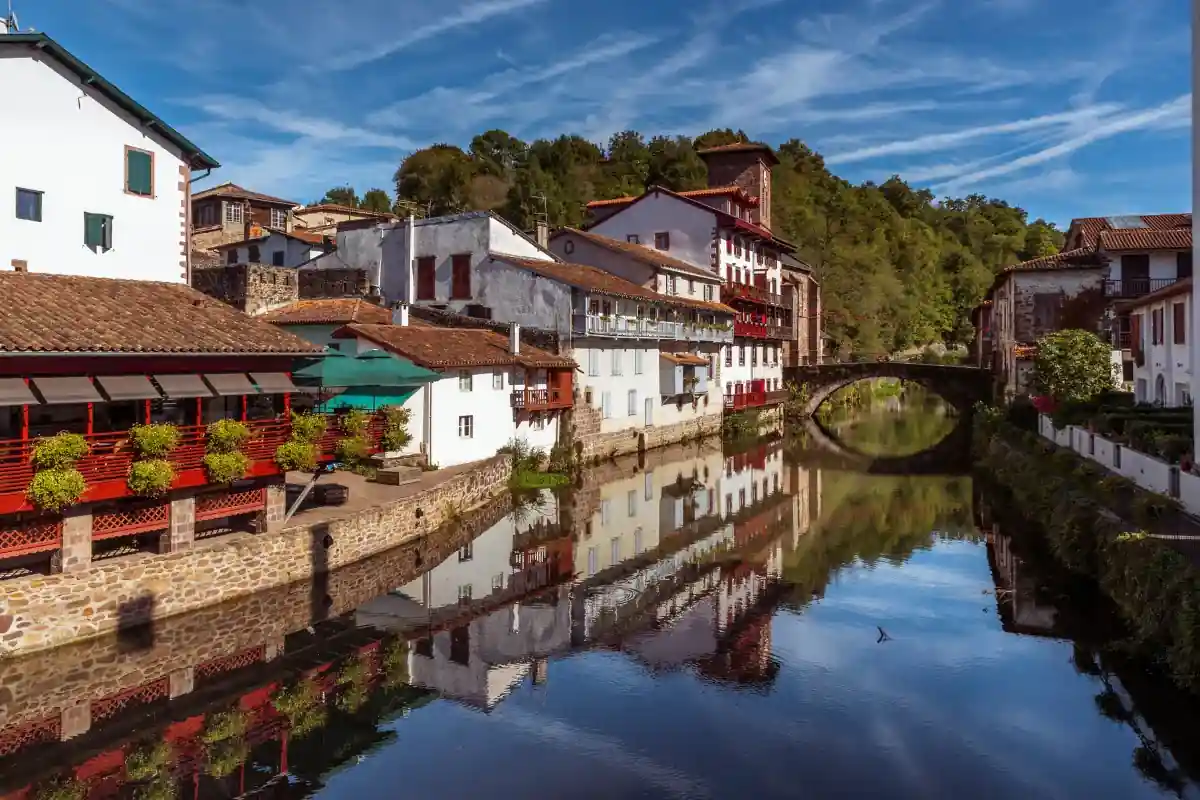
The town wears its history with pride: pink‑tinted sandstone facades, timber‑framed houses, and winding streets. The medieval walls—complete with Porte d’Espagne and Porte St Jacques—aren’t just for show. They’ve watched centuries of pilgrim traffic and Franco‑Spanish conflicts.
Why It’s Famous
With UNESCO recognition for its role on the Camino de Santiago route, Saint Jean Pied de Port is a must‑see. It’s not just a pilgrimage waypoint—though it’s that too—it’s Basque architecture, mountain views, and centuries of soul blended into one. Every step feels meaningful.
🚶 Starting the Camino de Santiago from Saint Jean Pied de Port

What Pilgrims Need to Know
If you’re here to walk the Camino Francés, your journey often begins at the Pilgrims’ Office. That’s where you get your Pilgrim Passport—your credencial—which you’ll need stamped at each stop. Day one?
The classic route over the Pyrenees to Roncesvalles (though there’s also the Valcarlos route). It’s steep—mountainous, really—but the payoff is breathtaking.
The trail leaves from Porte St Jacques and climbs, then climbs again—around 8 to 10 hours depending on pace and breaks. And yes, Refuge Orisson or a stop in Valcarlos can break the day up.
Where to Get Camino Info & Gear

Pilgrims’ Office is the hub—maps, advice, walking communities. Outdoor shops in town carry everything from boleadoras (walking poles) to shell jackets.
If you forgot sunscreen or blister pads, no sweat, you’ll find them. Plus, Camino forums and a local Facebook group can connect you with gear‑sharing, ride‑shares, even last‑minute Hotel Deals or advice on St Jean Pied de Port hotels.
🏰 Top Things to Do in Saint Jean Pied de Port
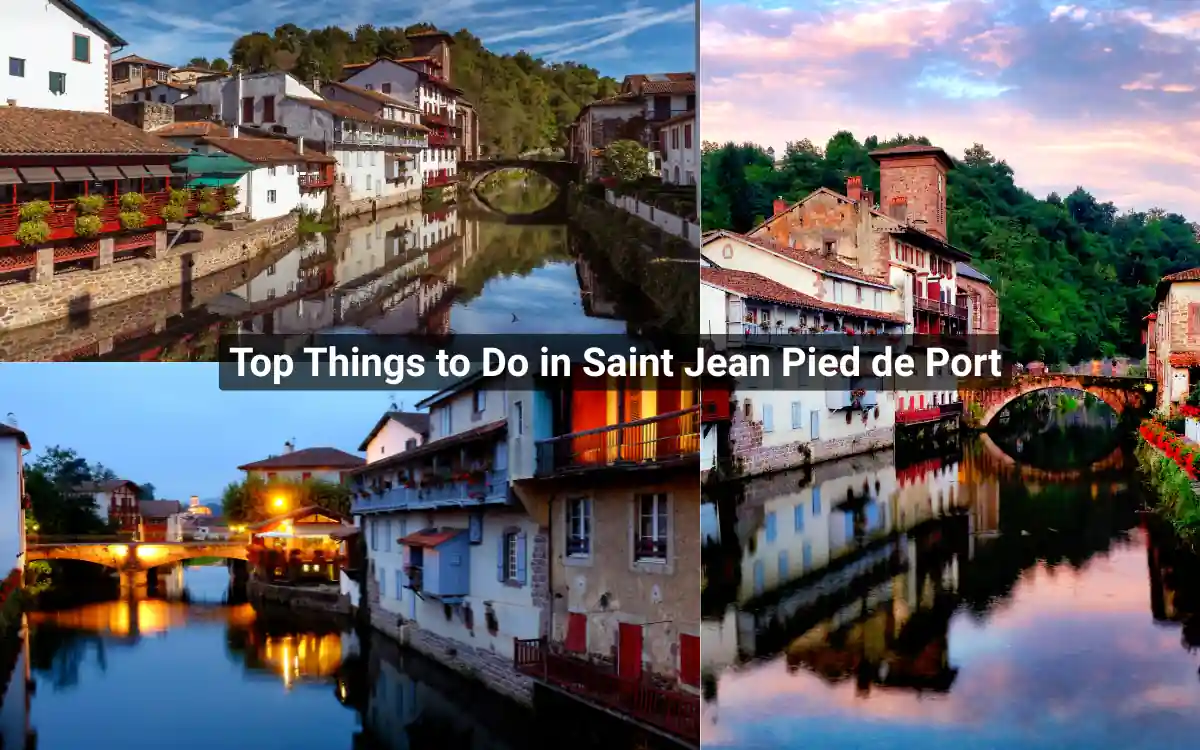
Walk the Rue de la Citadelle
This street… it’s kind of the spine of the whole town. If you do only one thing, walk Rue de la Citadelle from end to end. It’s a gently sloping cobbled lane lined with red-shuttered Basque homes, bakeries, quiet cafés, little souvenir nooks, and families chatting from their windows.
You’ll hear a dozen different languages in a single hour—German pilgrims, Spanish hikers, Japanese solo travelers, all moving with backpacks or curiosity.
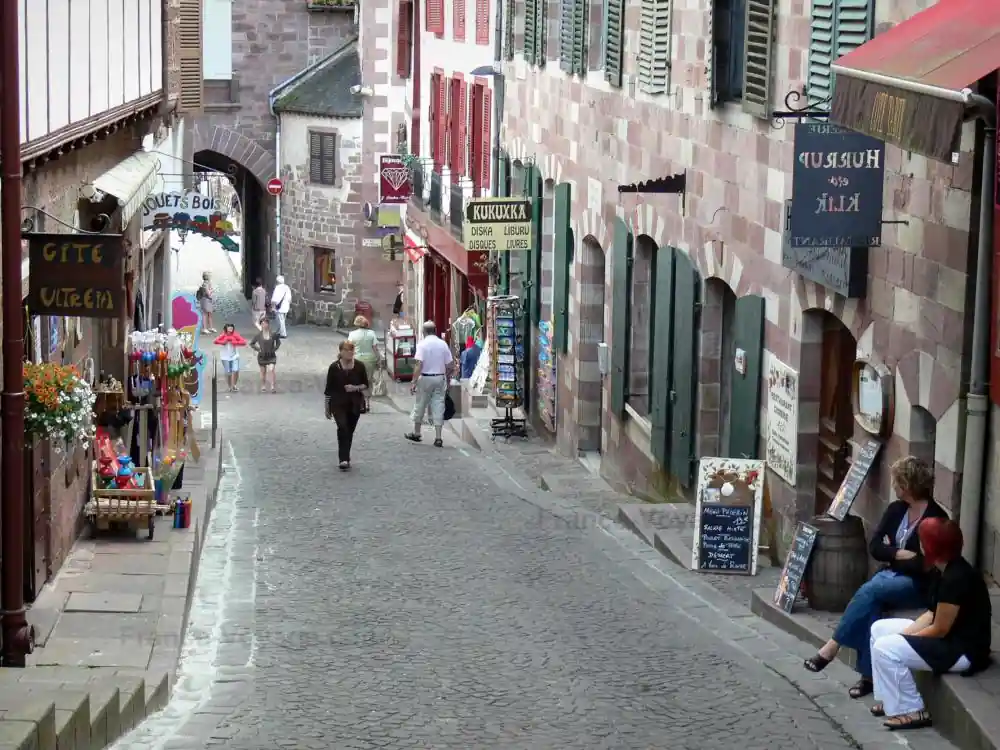
At the bottom, the arched bridge gives you one of the most photogenic spots in all of Saint Jean Pied de Port. If you’re looking for an iconic Camino de Santiago photo… this is it.
Visit the Citadel (Citadelle de Saint-Jean)
Set high above town (and yes, the walk is steep), the 17th-century Citadel watches over the rooftops and surrounding hills. Built originally as part of Vauban’s defensive design, this spot now feels peaceful… almost too quiet for its military past.

When you reach the top, the views of the Pyrenees Mountains are sweeping. On clear days, you can see all the way toward the Roncesvalles Pass, the route so many pilgrims take on their first day. Some stand up there quietly, like they’re sizing up tomorrow.
Explore Église Notre-Dame du Bout du Pont
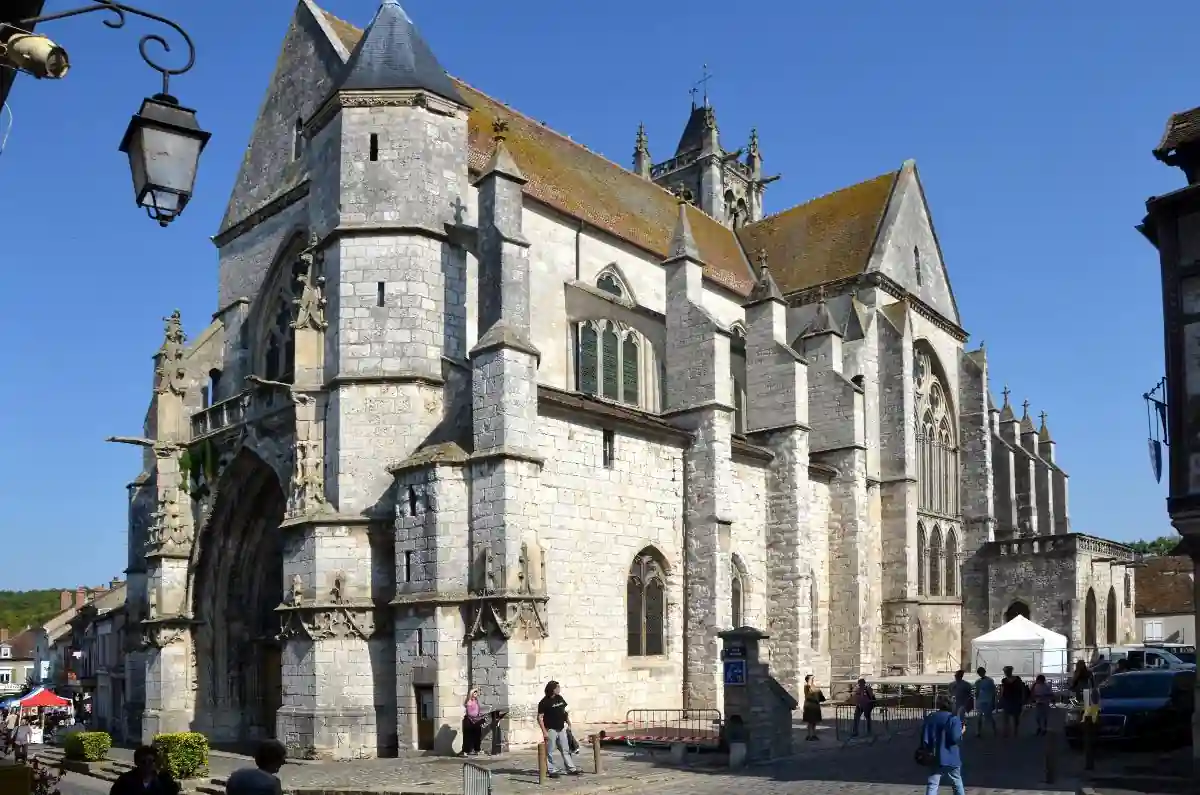
Literally, “Our Lady at the End of the Bridge.” This Gothic church sits right at the base of Rue de la Citadelle, by the river. It’s not grand in a cathedral way, but it feels personal—especially when bells ring in the morning mist.
Inside, there’s a sense of quiet determination. Pilgrims sometimes light a candle before setting off on the Camino Francés. Even if you’re not religious, there’s something about the atmosphere here that settles your thoughts.
Discover the Old City Gates (Porte St-Jacques & Porte d’Espagne)
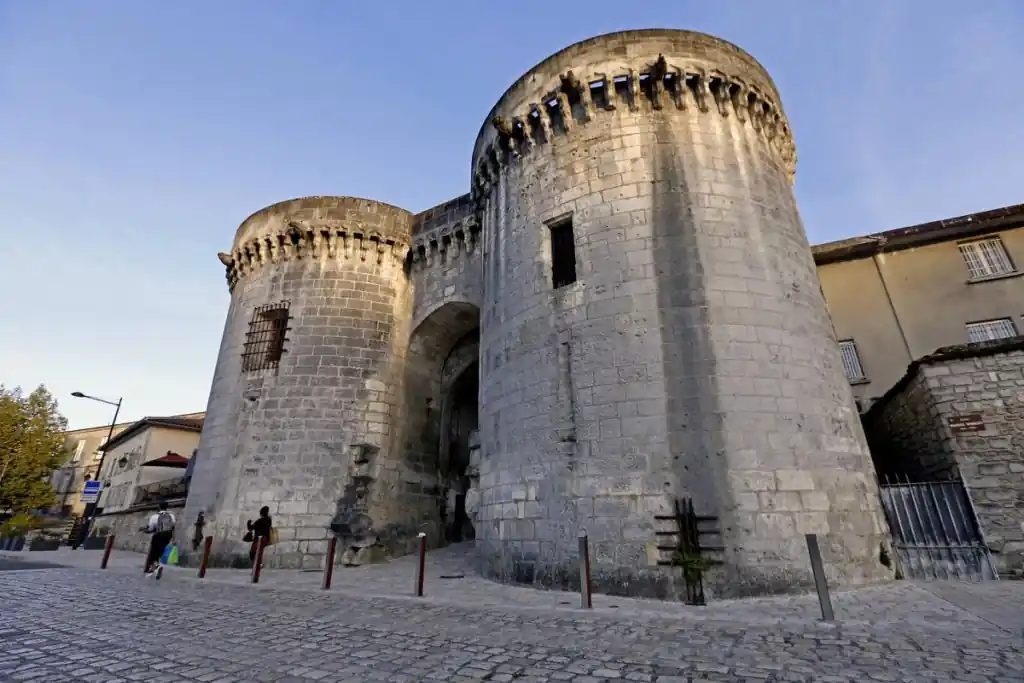
These aren’t just gates… they were real entry points for pilgrims crossing into the Kingdom of Navarre from France. The Porte St-Jacques, part of the UNESCO-listed Camino route, is the symbolic exit for pilgrims leaving Saint Jean Pied de Port.
As you walk through, you feel a shift… like you’re stepping out of the village and into the unknown. Which, honestly, you kind of are.
🧭 How to Get to Saint Jean Pied de Port
From Paris or Bordeaux
If you’re coming from Paris, there are two main steps:
- Train to Bayonne – Take a TGV from Gare Montparnasse in Paris or from Bordeaux.
- Local train to Saint Jean Pied de Port – The line is slow, winding, and oddly charming. You’ll pass pastures, small villages, and views that feel like you’re gradually shedding your city skin.
The whole trip can take around 7 to 9 hours depending on your connections. The Saint Jean Pied de Port map is handy for understanding the final leg—you’ll want to download it in advance in case mobile service cuts out.
Airports Nearby
• Biarritz Airport is the closest—about 55km away
• Pau and San Sebastián are decent options too, with regional transfers
From Spain (Pamplona or San Sebastián)
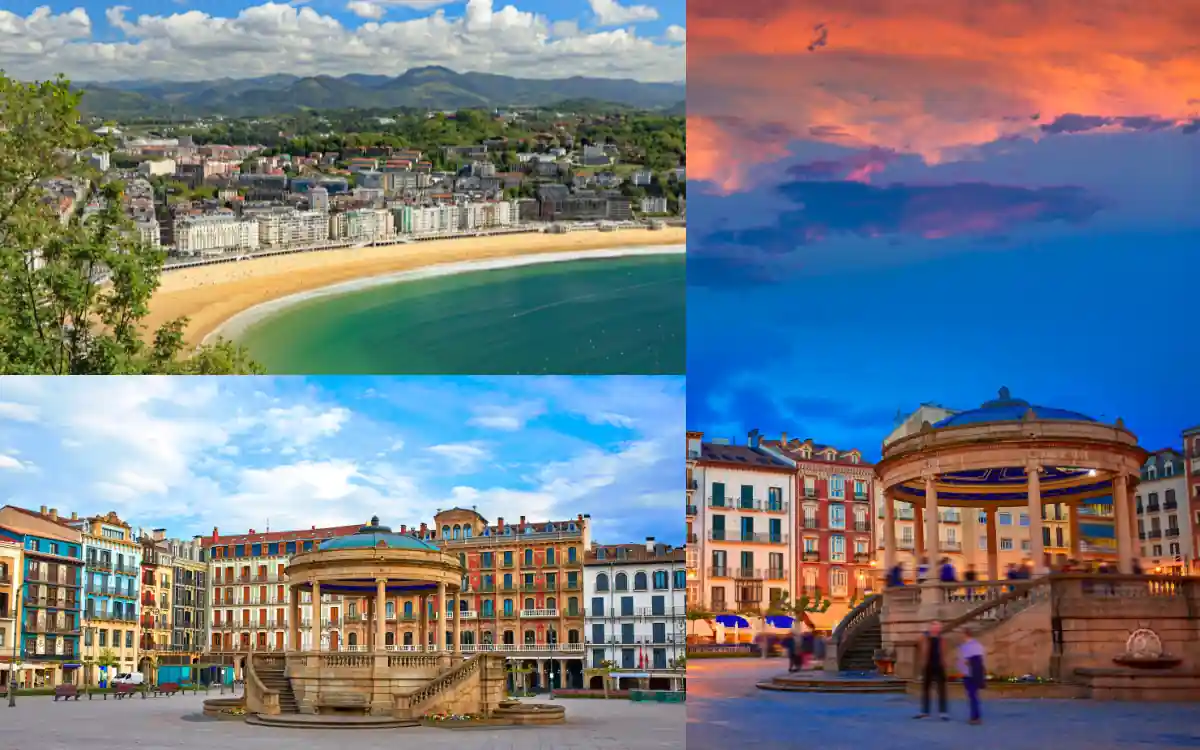
Coming from the Spanish side? There are shared shuttle vans (especially popular in high season) that bring pilgrims from Pamplona, often after flights into Madrid-Barajas or Barcelona.
One Tip: If you’re starting in Saint Jean Pied de Port but want to return to Spain afterward, check the St Jean Pied de Port to Santiago map for route planning. Many walkers reverse the journey or hop buses like ALSA for major stopovers.
🏨 Where to Stay: Hotels, Albergues & Guesthouses

Budget & Pilgrim-Friendly Options
These places fill up fast during peak Camino season—April to October—so booking ahead (even if it feels weird to plan something so spiritual) is smart. Some great choices:
- Gîte Beilari – known for warm communal dinners and personal touches
- Refuge Municiple – simple, affordable, right in town center
- Gîte Le Chemin vers l’Étoile – peaceful atmosphere and Camino-focused
Boutique & Mid-Range Hotels
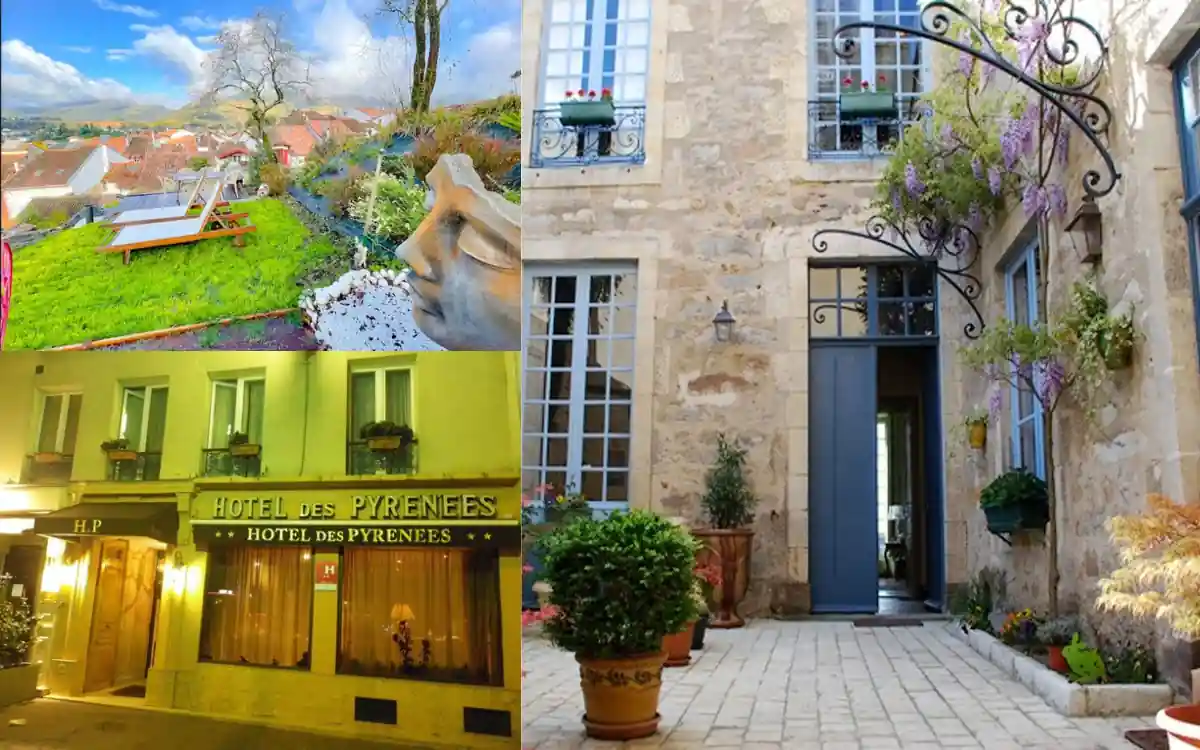
Want something with a little more style but still walkable to town center? You’ll find a few lovely picks:
- Hôtel des Pyrénées – a refined Basque stay with a gourmet touch
- Maison E. Bernat – more personal, quieter, great river views
- Chambres d’Hotes Maison Gaury – charming, with cozy breakfasts and local insight
| Type of Stay | Best For | Example Locations |
| Albergue / Gîte | Budget pilgrims & solo travelers | Refuge Municiple, Gîte Beilari |
| Boutique Hotel | Couples or history lovers | Hôtel des Pyrénées, Maison E. Bernat |
| B&B Guesthouse | Personal, warm service | Maison Gaury, Chambres d’Hotes Bernat |
Booking Tips
- Reserve 2–3 weeks ahead for spring or summer
- If you’re arriving late, let your host know in advance—many close check-in by 8 pm
- Look for places that offer luggage forwarding or breakfast-to-go for early walkers
🍷 Where to Eat & Drink in Saint Jean Pied de Port
Local Cuisine Highlights
Food here leans rustic and deeply Basque. Think slow-cooked stews, farm cheese, and wines you won’t find back home. A few must-try dishes include:
- Axoa – a spicy veal stew often served with potatoes. Surprisingly light, given its richness.
- Piperade – made with sweet peppers, tomato, and egg, usually paired with Bayonne ham.
- Fromage de Brebis – sheep cheese that’s often aged… the kind of thing that makes you pause mid-bite.
- Salmais de Palombe – a dense game bird stew, usually cooked down in red wine.
You’ll also find a good range of local wines. The Irouléguy AOP reds and rosés are made just a few kilometers from town, and many places pour them by the glass.
Recommended Restaurants & Cafés
Saint Jean Pied de Port might be compact, but there’s no shortage of flavor. Here are a few places that stand out, whether you’re dining solo, with fellow pilgrims, or just in for a lazy lunch:
- Le Petit Gourmand – Friendly staff, local menu, and just enough formality without being stuffy.
- Café Ttipia – Basque comfort food, wooden beams, and a terrace view over the river.
- Les Remparts – Slightly more upscale, often overlooked but a gem if you want quiet and great wine.
- Pilgrim set menus – Offered in most Saint Jean Pied de Port restaurants, these are filling, affordable, and usually come with wine, bread, a starter, and dessert.
If you arrive late, check hours in advance — dinner starts early here and kitchens close by 9 pm.
🎒 What to Pack for Your Visit or Camino Start
Essentials for Pilgrims

Packing can feel like a puzzle, especially if you’re beginning your Camino Saint-Jean Pied de Port route. But most of what you truly need is pretty simple:
- Trail-ready shoes – tested and worn-in before you arrive
- Quick-dry clothes – at least 2–3 changes
- Rain jacket or shell – even in summer, the Pyrenees can surprise you
- Headlamp or small flashlight – useful for early departures or shared dorms
- Refillable water bottle – fountains are common
- Guidebook or map – like a Camino Francés overview, or even a St Jean Pied de Port to Santiago map
Other optional-but-handy items:
- Blister care (yes, everyone needs it eventually)
- Travel-size toiletries
- Trekking poles (especially for the Route de Napoleon)
- Portable phone charger
For Regular Visitors (Not Walking the Camino)
If you’re just here to relax, explore, and maybe sip wine in a quiet square, you can skip the ultralight backpacking list. Here’s a simpler version:
- Comfortable walking shoes (cobbles can be slippery)
- Layers (mornings are cooler than you’d expect)
- Light rain jacket or small umbrella
- A daypack for carrying snacks, water, or souvenirs
- Your camera (or a phone with storage to spare… this place is photogenic)
If you’re planning to drive or rent a car in the Basque region, it’s worth downloading a saint-jean france map offline in advance. GPS can get patchy in the hills.
🛍️ Souvenirs & Local Crafts to Take Home
Souvenir shopping here doesn’t feel forced. There are no big-name stores or tourist traps — just quiet artisan shops and family-run stalls. A few things to look out for:
- Basque berets – surprisingly wearable and come in all colors
- Hand-stitched espadrilles – especially from shops tucked near the river
- Irouléguy wines – easy to pack and most local shops can wrap them for travel
- Fromage de Brebis – many cheese shops vacuum-seal it for flights
- Camino scallop shell necklaces – symbolic, small, and often handmade
- Wooden walking sticks – some engraved with the year or the town name
- Artisan soaps – infused with local herbs and essential oils
There’s also a quiet street market every Thursday, where local producers from across the Pays de Saint-Jean-Pied-de-Port region bring cheese, bread, wine, and more.
Pro tip: If you’re shipping anything home, ask the shopkeeper. Some offer export or EU-shipping options you won’t see posted.
📅 When to Visit Saint Jean Pied de Port
You could show up here any time of year, and something about the place will still tug at you. But if you’re trying to catch Saint Jean Pied de Port at its most inviting — where weather, crowds, and Camino season all come into balance — summer to early fall is probably your best bet.
Best time to visit Saint Jean Pied de Port:
| Season | What to Expect |
|---|---|
| April–June | Camino season begins, flowers blooming, mild temperatures |
| July–August | Peak crowds, warm days, ideal for festivals and long walks |
| September–October | Quieter paths, cooler nights, vibrant fall foliage |
| November–March | Off-season, many hostels and shops closed, fewer pilgrims |
If you’re walking the Camino Saint-Jean Pied de Port, late spring or early fall often hits that sweet spot. Enough fellow travelers to share stories with, but not so many that you’re queuing for a bed. And the skies? Sometimes just ridiculously blue.
That said… there’s something kind of magical about fog-draped mornings in winter too. If you don’t mind the chill, you might find the solitude oddly refreshing.
💡 Tips for First Timers
If you’ve never been to this town (or never walked the Camino), you’re in good company. Most folks arrive a little wide-eyed, maybe even a bit unsure about what to expect. So here are a few practical, quietly important tips:
- Arrive a day early if you’re starting the Camino. That first walk to Roncesvalles is no joke — resting before helps.
- The Pilgrims’ Office is usually your first stop. Friendly staff, lots of languages spoken, and they’ll help you decide between the Route de Napoleon or Valcarlos route (weather matters here).
- Cash is still king in many places — especially small shops and some gîtes.
- Learn a few Basque words or phrases. Even just saying kaixo (hello) or eskerrik asko (thank you) goes a long way.
- Train schedules can shift, especially if you’re coming from Paris Charles de Gaulle or Gare Montparnasse. Always double-check on the day.
And one more thing — don’t overthink your first day. Whether you’re walking or just exploring, the rhythm of this place is gentler than you expect. It kind of teaches you to slow down… even before you realize you needed to.
📝 Final Thoughts
Saint Jean Pied de Port isn’t just a stop on a map or a footnote in some ancient route. It’s this curious blend of silence and energy. History and modern-day movement. You hear walking sticks tapping on the stones and then… a quiet café laugh, or church bells echoing off the Pyrenees.
Whether you’re heading out on the Camino de Santiago, diving deep into Basque country, or just meandering with no particular plan, this town makes you pause. It kind of insists on it.
And maybe that’s what makes it unforgettable. Not just the places you see — the Citadelle, the Porte St Jacques, the cobbled Rue de la Citadelle — but how it makes you feel. Like the journey already started… long before your feet hit the trail.
💬 Frequently Asked Questions
1. Is Saint Jean Pied de Port only for Camino pilgrims?
Not at all. While it’s famous as the start of the Camino Francés, it’s also just a charming old town in the French Basque country. With its cobbled lanes, hilltop citadel, and cozy cafés, it’s worth exploring even if you have no intention of walking to Santiago de Compostela.
2. How many days should I spend in Saint Jean Pied de Port?
If you’re walking the Camino, you might only stay one night. But if you’re here to soak up the vibe, two to three days gives you enough time to explore the old town, do a short hike, and even take a peek at the surrounding Pays de Saint-Jean-Pied-de-Port villages.
3. What’s the best way to get there?
It depends on where you’re coming from. From Paris or Bordeaux, most people take a train via Bayonne. If you’re flying in, Biarritz Airport is the closest. You could also rent a car and make it part of a longer Basque road trip.
4. Is there a map of Saint Jean Pied de Port I can use to explore on foot?
Yes, the Saint Jean Pied de Port map is available at the Pilgrims’ Office and tourist info centers. It highlights main landmarks like the Porte d’Espagne, Rue de la Citadelle, and Citadel viewpoint, as well as restaurants, hotels, and local shops.
5. Where can I stay that’s not a pilgrim hostel?
There are a few lovely options if you’re looking for comfort. Saint Jean Pied de Port hotels range from simple guesthouses to more upscale picks like Hôtel des Pyrénées. For a mid-range stay, Chambres d’Hôtes Maison E. Bernat is cozy and well-rated.
6. What are the must-try dishes in the area?
Basque food here is comforting and flavorful. Try Axoa, a spiced veal stew, or Ossau-Iraty AOP cheese with local Irouléguy wine. Don’t skip the Basque-style baby squid if you see it on a menu. For a casual local meal, Saint Jean Pied de Port restaurants like Café Ttipia or Le Petit Gourmand are solid.
7. Is it possible to walk just a small part of the Camino from here?
Absolutely. Many folks start walking from Saint Jean Pied de Port to Roncesvalles, even if they’re not committing to the whole route. It’s a challenging but iconic stretch — up and over the Pyrenees Mountains — and doable as a single-day experience if you’re fit and well-prepared.
8. What’s the difference between the Napoleon and Valcarlos routes?
The Route de Napoleon is steeper and more scenic — usually open April through October. The Valcarlos route is the alternative when weather is rough or snow closes the high pass. Both eventually lead you to Roncesvalles, just in different ways.
9. Are there any good souvenirs or local items to take home?
Yes, and they’re not just touristy knick-knacks. You’ll find beautiful handmade Basque espadrilles, locally produced wines, regional cheeses, Camino scallop shell charms, and artisan soaps. Also, the Pilgrim’s Shop is full of practical and symbolic Camino gear.
10. Can I follow a map from Saint Jean Pied de Port to Santiago de Compostela?
Definitely. You’ll find St Jean Pied de Port to Santiago map booklets, Camino apps, and printed Camino Francés trail maps in town. A lot of people use a mix of printed guides and GPS-based apps. Waymarkings (yellow arrows and scallop shells) make it hard to get truly lost.






